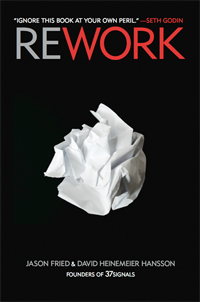 There’s been quite a bit of press recently questioning the benefits of a business education for those who want to start their own businesses. For instance, in an article titled “You Could Get There Faster Without An MBA” in the Business Insider, author Jay Bhatti says that the cost and the time commitments for getting an MBA make the degree less valuable than just jumping right in and innovating.
There’s been quite a bit of press recently questioning the benefits of a business education for those who want to start their own businesses. For instance, in an article titled “You Could Get There Faster Without An MBA” in the Business Insider, author Jay Bhatti says that the cost and the time commitments for getting an MBA make the degree less valuable than just jumping right in and innovating.
Category Archives: Entrepreneurship
Is “Design Thinking” More Than Just a New Coat of Paint?
If you’ve been looking for MBA programs, you might have come across the phrase “design thinking.” So, what exactly is this, and what does it mean?
Briefly, in terms of business, design thinking is a way of solving problems through the lens of design: using methodologies and strategies to see those problems in terms of an integrated system, and then finding solutions that make sense in terms of the larger system. Typically, design thinking is a human-centered approach, which means that by using insights into psychology and the social science, practitioners can develop solutions that meet the needs of people.
 Design thinking generally goes hand-in-hand with MBA programs that are strong in innovation and entrepreneurship. It makes sense, really – if you want to create new, innovative products, you will need to think about design (and how consumers will use the products) from the very beginning. Honing this approach is one of the reasons why California College of the Arts’ MBA in Design Strategy is popular with entrepreneurial-driven students.
Design thinking generally goes hand-in-hand with MBA programs that are strong in innovation and entrepreneurship. It makes sense, really – if you want to create new, innovative products, you will need to think about design (and how consumers will use the products) from the very beginning. Honing this approach is one of the reasons why California College of the Arts’ MBA in Design Strategy is popular with entrepreneurial-driven students.
CCA’s program, along with those at other b-schools – including Stanford, Insead, and the Rotman School of Management at the University of Toronto – show a widening adoption of design thinking and strategies into traditional business curriculum. By integrating design thinking, these programs tout an integrative, human-centered (and often multidisciplinary) approach to the traditionally by-the-numbers nature of business. Rotman’s website points out some of the core philosophies behind its program:
Whether the goal is to develop new products or services, create new ways of marketing to customers or reinvent an entire business model, ‘design thinking’ helps get bigger ideas, faster and more efficiently. We believe the mindset and methods behind great design are the same ingredients for successful Business Design. By incorporating the ‘design experience’ into our curriculum, we offer students a unique and valuable opportunity to learn new ways to tackle complex challenges in deeper and more holistic ways.
However, some observers aren’t sold on the benefits of design thinking, and believe that it means little more than adding a new coat of paint to an old product. Peter Merholz, in a post titled “Why Design Thinking Can’t Save You” on Hass Business Review’s Blog, calls recent media attention to design thinking “fetishistic,” and says that:
“Design thinking is trotted out as a salve for businesses who need help with innovation. The idea is that the left-brained, MBA-trained, spreadsheet-driven crowd has squeezed all the value they can out of their methods. To fix things, all you need to do is apply some right-brained turtleneck-wearing ‘creatives,’ ‘ideating’ tons of concepts and creating new opportunities for value out of whole cloth.”
Indeed, the turtleneck-wearing creative crowd sometimes gets a bad rap, because many assume that design is only concerned with outward aesthetics. In a TED talk, author Tim Brown (whose book “Change by Design: How Design Thinking Transforms Organizations and Inspires Innovation” is required reading in some design-oriented MBA programs,) says that when designers (possibly while wearing turtlenecks) create new designs that simply repackage existing products, they are thinking small. He posits that design thinking should be much more than just reskinning a product – in fact, by thinking big and perceiving problems through a human-centered and design-oriented paradigm, we can solve some of our most pressing challenges, including climate change and access to healthcare.
Of course, these challenges require more than just a new coat of paint.
If you’re interested in learning more about design thinking, It’s definitely worth checking out Tim Brown’s TED talk:
Book Review: Don’t Call Us Entrepreneurs
 Jason Fried & David Heinemeier Hansson
Jason Fried & David Heinemeier Hansson
Rework: Change the Way You Work Forever
Crown Business (US) / Vermilion (UK), 2010
Rework is a short, punchy business manifesto written by the founders of the Chicago software company, 37signals. It’s the kind of book you can breeze through in an afternoon, which is perhaps one reason why it climbed the New York Times bestseller list earlier this year.
Another reason, no doubt, is the book’s simplicity. The authors set out to make a few dozen points – lessons learned while building a company over the last decade. Like with many other popular business books, some of the points will border on truism (“Embrace constraints”, “Meetings are toxic”) for the Generation X and Y reader.
Luckily, however, most points laid out in Rework are provocative – not the kind of things you’ll usually find on hardcover dust jackets in the business section; things like “Emulate drug dealers” “Learning from mistakes is overrated;” and “Good enough is fine.”
Interview: Emily Cieri of the Wharton School
Entrepreneurship cannot be just learned in the classroom, says Emily Gohn Cieri of the Wharton School of the University of Pennsylvania. You have to get out there and do it. Cieri is managing director of Wharton Entrepreneurial Programs at Wharton. We asked her how an MBA can help aspiring entrepreneurs.
How can an MBA benefit aspiring entrepreneurs?
Entrepreneurship cuts across every business discipline – management, marketing, operations, legal…. – studied in a business school. For an entrepreneur, it’s critical to have a broad understanding of these various disciplines, but also to understand how to these disciplines work together.
When an entrepreneur builds a business, he or she cannot focus only on one issue at a time, but must be able to understand how to integrate them. From my experience, many times students seek an MBA to complement their strong technical or engineering background or industry-specific skills, with a full range of business skills that are needed to be an effective entrepreneur.
Student Interview: Michael Ross at UCLA Anderson
After ten years working on the East Coast, Michael Ross came out West to push his comfort zone as an MBA student at UCLA Anderson. With his first year almost behind him, we asked him how it’s going.
How did you end up at UCLA? And why Los Angeles?
It’s like the admissions interview all over again. I had about nine years of professional experience before I started. I graduated from UPenn with an undergraduate focus in computer science, and I took a couple of classes at Wharton, as well. I was interested in marrying business to technical applications.
I joined an incubation services and information technology firm backed by Kleiner Perkins called Silicon Valley Internet Partners. I was there for four years. It was 1998, and nascent Internet times. And you had a lot of start-ups with venture backing and large companies that wanted to be entrepreneurial and wanted to understand how to use the Internet.
So I was there for four years. I loved it. I was in a product management role, and I worked across disciplines, with strategists, graphic designers, interface designers, technologists. It was an incredible experience, and left me desiring to have that experience I progressed professionally. Unfortunately, those were anomalous times. I progressed, those experiences became fewer and farther between.

